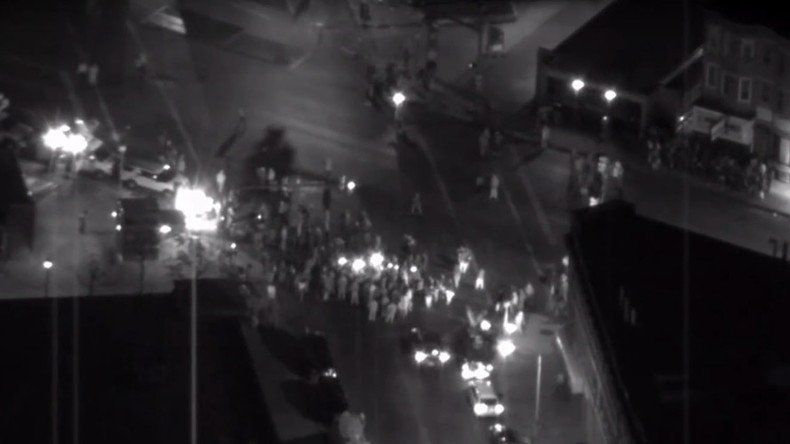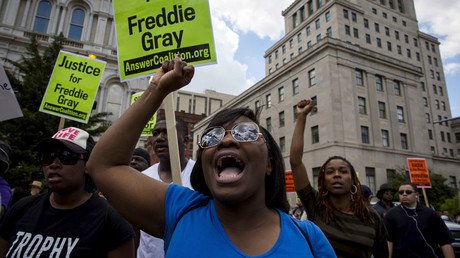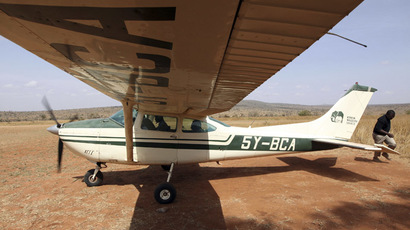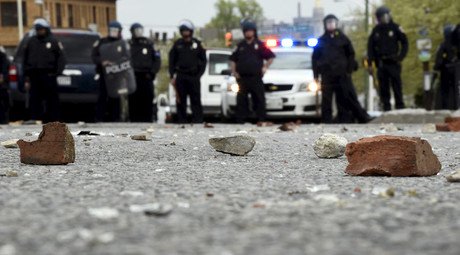FBI releases 18 hours of surveillance footage from Freddie Gray protests

The FBI has released spy footage taken during the Baltimore 2015 protests honoring Freddie Gray, who died in police custody. Footage includes traditional and infrared modes, the latter to allow for nighttime recording.
The 18 hours of footage, released in response to a Freedom of Information Act request by the American Civil Liberties Union, pertains to marches, rallies, and smaller congregations of people protesting or mourning the death of Freddie Gray in Baltimore from April 29 through May 3, 2015.
While the FBI previously admitted to surveilling protests in Baltimore — as well as in Ferguson, Missouri, amid protests over the police killing of unarmed black teenager Michael Brown — using aircraft registered to front companies to avoid FBI ownership, the FOIA release represents the first public offering of such footage. The FBI footage came from at least 10 flights, according to FBI records.
"The aircraft were specifically used to assist in providing high-altitude observation of potential criminal activity to enable rapid response by police officers on the ground," said FBI spokeswoman Amy Thoreson in May 2015. "The FBI aircraft were not there to monitor lawfully protected First Amendment activity."
FBI aerial surveillance footage of the mass student demo organized by Baltimore's grassroots on 4/29/15... pic.twitter.com/O0Dz7g2FDh
— Baltimore BLOC (@BmoreBloc) August 5, 2016
The FBI surveillance footage was taken at high altitudes; when the camera zooms out, shots depict large sections of Baltimore. Though at high zoom, the footage tracks movements of individuals and small groups. Even then, identifying those individuals is difficult. Nevertheless, the ACLU said the "footage can reveal a great deal of potentially sensitive information." The footage switches between different shots at various areas of the city, suggesting a comprehensive tracking effort of the protests.
Gray, 25, died a week after he suffered spinal cord injuries while he was being transported in a Baltimore police van following an arrest for allegedly carrying an illegal knife. None of the six Baltimore police officers involved in the arrest and transport of Gray were punished even though Gray's death was considered a homicide by city officials.
The FBI posted the "complete collection of aerial surveillance footage" of the Baltimore protests on its website after releasing it to the ACLU. The federal law enforcement agency's record retention policy for such footage is uncertain, according to the ACLU.
"What are the retention rules for these videos? And are there limits on FBI agents revisiting them in the future, as part of specific investigations or just at their whim?" the ACLU's Nathan Freed Wessler and Naomi Dwork asked.
"The videos show people engaged in First Amendment-protected activities, people entering and exiting homes and other buildings, images of private back yards and roof decks, and other similar scenes and spaces. The videos sometimes track individual drivers as they traverse city streets."
Another question arising from the FBI videos concerns small drones that can be seen in the footage. It is not clear to the ACLU who was operating the drones or if they were engaged in legal flights.
"Who was flying these drones? Baltimore Police? Curious city residents? Journalists? What were they looking for?" the ACLU asked, adding that the US Federal Aviation Administration requires such drones to stay within sight of operators.
In June of 2015, the Associated Press first revealed that the FBI used traditional aircraft registered under front companies to conduct video and cellphone surveillance missions across the United States. The surveillance was typically conducted without a judge's approval, the AP reported. The FBI said the flights were used for ongoing agency investigations, telling the US Senate that the operations were legal. "Dirtbox" technology, which simulates a cell-tower signal to trick phones in the area into revealing identification numbers, has only been used five times over the past five years, the FBI said at the time.
The FBI airplanes were registered to at least 13 fake companies, including FVX Research, KQM Aviation, NBR Aviation, and PXW Services.















